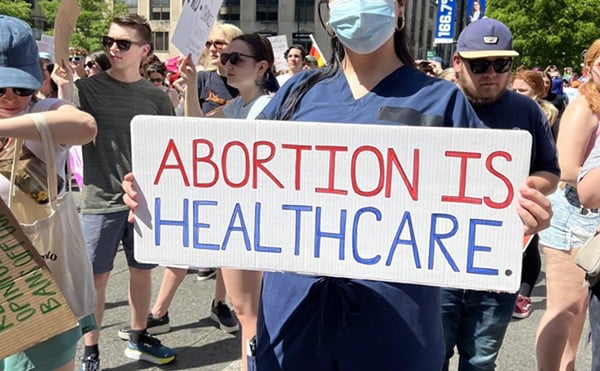The highly competitive midterm elections Nov. 7 set a new record in campaign spending, and large media companies are cashing in. The Center for Responsive Politics estimates that more than $2.8 billion was spent this election cycle as each party contended for the votes of the American public — a 27 percent increase over 2002.
Of that immense amount of political capital, more than $1.4 billion was spent on political advertising buys in local and national media markets. But even as political advertising revenue has grown, actual news coverage of local issues by local television and radio stations has shrunk.
As television and radio conglomerates grow larger, the size of local newsrooms is shrinking. Today, most of the face time candidates get on television is through negative political advertising — as demonstrated in Ohio perhaps more than any other state. And although news programs spend some time covering the horse race, very little time is spent on the substance of either candidate's political views and how those views relate to important local issues.
In fact, a study conducted by the University of Southern California found in 2004 only 8 percent of all newscasts contained stories about local elections. Even more telling, 47 percent of the coverage surrounding the 2002 midterm elections discussed "horse race" polling numbers rather than actual campaign substance.
Many media observers chalk up this decline to the unprecedented amount of media consolidation in the past decade.
A report recently made public by the Federal Communications Commission (FCC) indicates that, as out-of-town media companies buy out smaller local stations, the coverage of local issues significantly declines.
In fact, the FCC found that locally-owned radio and television stations air close to six minutes more local news per broadcast than stations with more distant owners. What's more, local ownership adds more than three minutes of actual on-location news to each broadcast.
This all adds up to a simple equation: As large media conglomerates swallow up local outlets, consumers are exposed to less local news. Instead we're forced to watch, listen and read pre-packaged and often recycled news stories from a limited number of media companies, many owned by the same source.
This declining coverage of local news creates a dangerous dynamic. As the public is blasted with an ever-increasing amount of negative ads, the number of independent voices in the media seeking to provide an objective lens through which to view candidates is rapidly declining.
Viewers are left with a meager impression of elected officials, based on whichever attack ad resonates most with them. And undecided voters receive less objective news to base their decision on.
Even more worrisome, the FCC might decide to weaken the ownership rules that limit just how big Big Media is permitted to get and that prevent local media outlets from buying each other out.
In 2003, the FCC voted to relax most of the remaining restrictions on how many television stations companies were permitted to own in the same media market. And the FCC was poised to lift the ban on cross-ownership, allowing one company to own up to three television stations, eight radio stations and the major daily newspaper in any one media market.
Information is the key to an informed electorate and a healthy democracy. No less is at stake as the FCC continues to rewrite its rules.
Fortunately for consumers, the cross-ownership rules were rejected by the federal courts and the FCC was sent back to the drawing board.
But now the FCC commissioners have re-committed to reviewing and revising these rules once again. This time around, they'll travel throughout the country to hear what the public thinks.
Tristate residents can submit their comments and thoughts to the FCC by visiting www.hearusnow.com and following the links to "comments."
JOEL KELSEY is grassroots coordinator for Consumers Union, the independent nonprofit organization whose mission is to work for a fair, just and safe marketplace for all consumers. CU publishes Consumer Reports. SAMUEL GRESHAM is acting executive director of Common Cause/Ohio, the nonpartisan nonprofit advocacy organization that helps citizens make their voices heard in the political process and hold their elected leaders accountable to the public interest.





